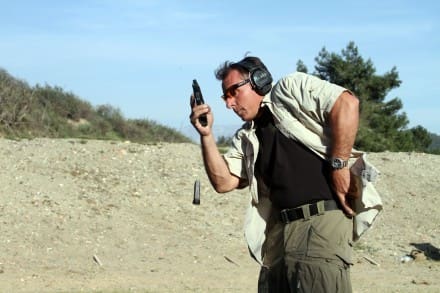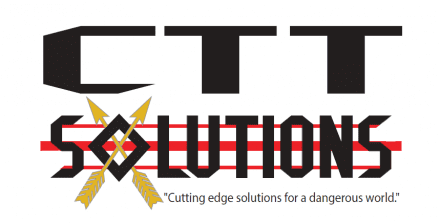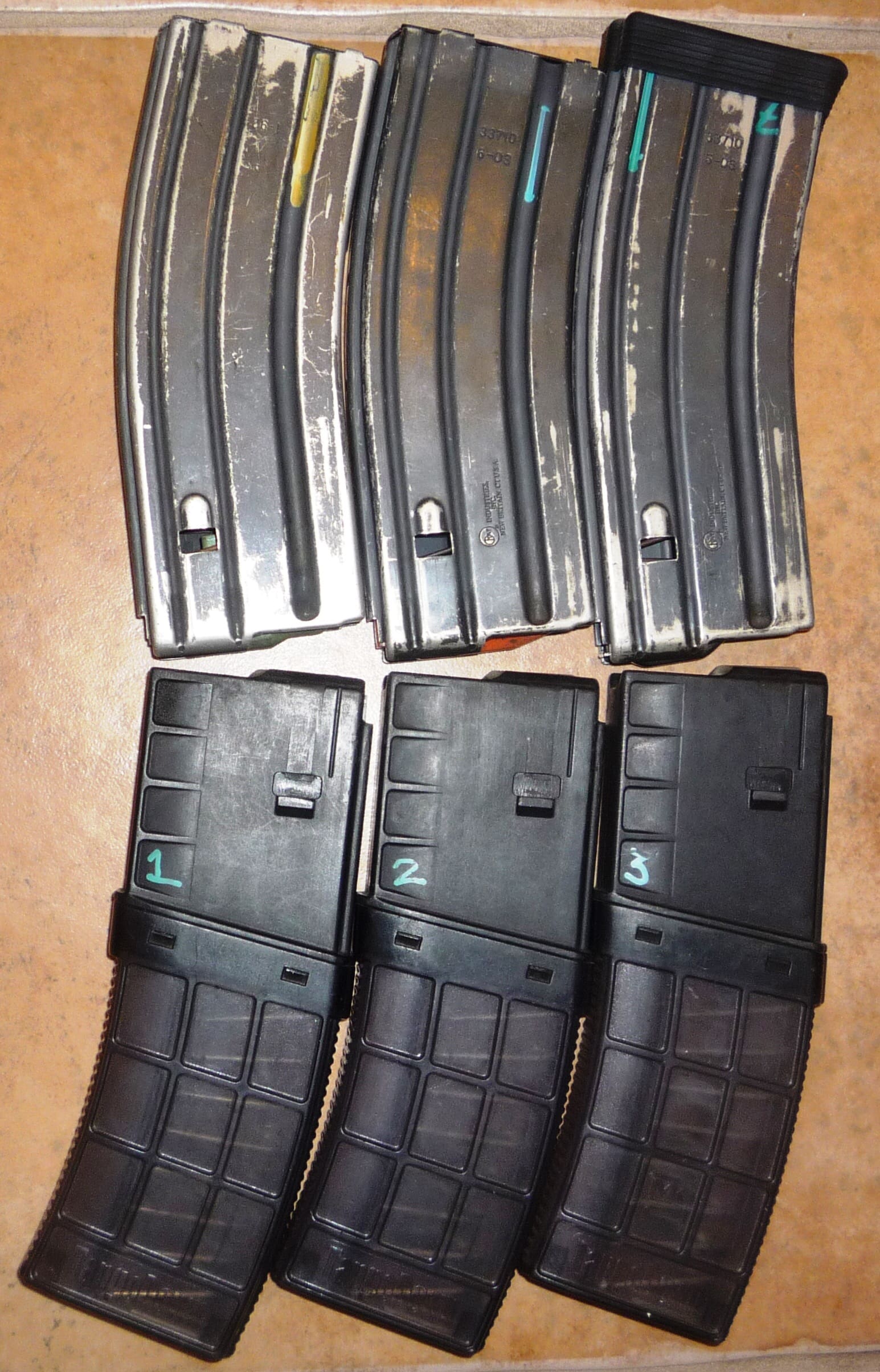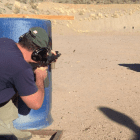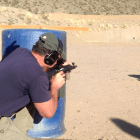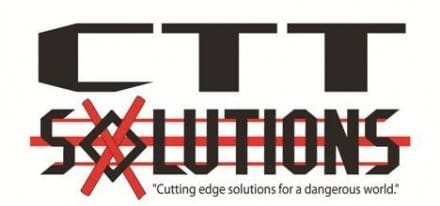Or
Why I prefer a different and better variation.
When I was leading the stand-up of the training cell in the Seattle Field Office of the Federal Air Marshals in 2003 a good friend, former Special Forces soldier with me at 1st SFG(A) and very accomplished stand-up as well as ground fighter Ron Haskins (God rest his soul) and I used to vet many of our techniques in an old school practical way. We would put on shorts and a t-shirt with Bollé goggles and fight over/with guns. The rule was we had a Sig229 with 2 Simmunitions rounds in it…if he got the gun…I got the Sim rounds. Having a “pain penalty” for failure makes people fight like they mean it. We concluded that many things taught, though they “briefed well”, were not effective and in some cases were prone to failure. With that as an overview of how I evaluate techniques, below are the 4 reasons I do not like the “temple index” (from now forward called TI) as presented and why I prefer what might be called “high port”. I view this specifically through the prism of training and experience in 1st SFOD-D, Federal Air Marshals (*we never executed nor taught this even in aircraft which is as confined a space as I have ever worked with both organizations) as well as working protection details in and around vehicles in a high threat environment in Iraq. All of my experiences in those venues have put a premium on confined space weapons management. To evaluate it, I’ll use with what I consider my validation template:
• What is it – Temple Index (TI)
• Why you do it (desired end state) – keep safe orientation and control of weapon in confined space or proximity to others
• How it works – the weapon is held in a normal dominant hand shooting grip pointing straight up in one hand by the temple so it cannot inadvertently flag yourself or another
• Identify the most likely failure points or mistakes:
If you draw a pistol in a confined space like a vehicle and then attempt to maneuver or exit with the TI you are far more likely to strike something like the roof or A/B/C –pillars or get fouled in a seatbelt depending where you are seated.
The gun is floating in one hand exposed to any blind spots in your vision and depending on how vigorous your movement is, it is far more difficult to control because it does not have strength or dexterity in the range of motion it utilizes.
Effectively you are holding the gun in the weakest manner, in a blind spot unless you are looking straight forward or towards the weapon, it is away from your body where it is extremely easy to disarm and the most difficult to defend from take-away attempts.
It is a poor “start position” if rapid engagement is needed and lends itself to a poor presentation grip. I say this specifically because it is in a position with very little strength and dexterity that is about as far from a normal draw and presentation shooting position you can have and still have a gun in your hand.
• Precede those with proper training – practice and use high port
Practice and use High Port-It is the same general concept but the pistol is positioned across the body 30 degrees forward and 30 degrees towards the support side in the same point as port arms with a rifle. It keeps the pistol up, away from you at about a 30 degree angle as well as any others that may be around you unless they are within a foot shoulder to shoulder and over 7 feet tall and then awareness not any specific position is what overwhelmingly keeps you from flagging people.
1. When using the high port you have the gun silhouetted in the footprint of your body without flagging anyone in the car so movement in and out of vehicles is only restricted or impeded by your actual physical size and removes the ability of the gun to be fouled by the roof, A/B/C pillars, seatbelts or anything else.
2. Because the gun is within the range of motion for strength and dexterity even with vigorous activity it is under complete control.
3. By keeping the gun in high port if a disarm is attempted it is far less exposed and any attempts must be done from the front minimizing an adversaries element of surprise. For that reason it is easier to defend against disarms with the high port.
4. From the high port position you are less than 6” from your normal position for pistol presentation known as position #4. This location makes it very fast, very natural and much more like your normal presentation sequence.
While I understand and agree with the needs for the temple index for certain situations, I have no doubt there are far too many failure points and likely errors in the technique and make it an unacceptable default position. The high port will do everything the temple index will but does it with better control. It better protects from disarm attempts and all with a more natural and rapid ability to engage due to the location. The only time either is needed is during limited times when the gun is not being used and/or movement is required in and around others. The widespread use of the temple index in my opinion is done far more for cool points than practicality. I say that because only one person has been able to defend it with a cogent answer as to why he does it but it still hasn’t sold me for the abovementioned reasons. The window of application and practicality is very small and the technique is FAR too easy to disarm. Nearly every photo of it I have seen in application the gun is not anchored and the elbow is out. As far as I am concerned it is another position Sul (holding a pistol with one hand pointed at your support side foot always seemed like a bad idea). By that I mean though the concept is good the actual technique and its application have great failure points built into it, the greatest being weapons retention. In my experience its range of application is extremely limited and its proponents often cite the application based upon the precept of bad awareness and poor gun handling by the end user. I have never used it, seen it used or taught until now but have seen it done for extremely brief moments because it was a last resort to maneuver with a weapon in one hand. Also, even if you are shoulder to shoulder the high port does not flag anyone under 7 feet tall and overall muzzle awareness makes up for that. I look at it as an absolute last resort for a specific extremely limited use, not a signature “go to” position.
Other than running with a pistol I have only used a high port in limited situations and those were extremely tight confined vehicle exits and even then only until I was clear of the vehicle. Again, that is real use in a high threat environment not a training theoretical use.
I find a technique like the Temple Index is a bad replacement for proper weapons awareness and handling and violates the biggest concern when in confined areas or close proximity to theirs which is weapons fouling and retention. I can hold the pistol right in front of me like I would if holding a rifle at port arms and do all the same things without the problems of fouling or retention TI has.
When formulating techniques that revolve around non-standard positions it is very important to identify likely failure points before you institute the technique as a default.
When I was in the Special Forces Qualification course in 1992 I was given sage advice from an old SF soldier who was one of my cadre’ teaching planning- “If you don’t find the flaws in your plan first, they’ll find you…and it’s gonna hurt.” The temple index is a plan with too many flaws for me. With a minor variation on the theme, i.e. making it a high port versus Temple index, the technique mitigates the biggest concerns any shooter will have while employing the Temple Index. BTW, people have been using some variation of high port for years because it made sense to them technically, tactically and physically … and all without fanfare.
Roll how you like but that’s why I don’t use the Temple Index.
– Mike Pannone
Mike Pannone retired from the Army’s premier assault force (1st SFOD-D) after an explosive breaching injury. A year after his retirement America was attacked on 9/11 and he returned to help serve his country as the head marksmanship instructor at the Federal Air Marshals training course and then moved to help stand up the FAMS Seattle field office. In 2003 he left the FAMS to serve as a PSD detail member and then a detail leader for the State Department during 2003 and 2004 in Baghdad and Tikrit.
In 2005 he served as a ground combat advisor of the Joint Counter IED Task Force and participated on combat operations with various units in Al Anbar province. Upon returning he gave IED awareness briefings to departing units and helped stand up a pre-Iraq surge rifle course with the Asymmetric Warfare Group as a lead instructor. With that experience as well as a career of special operations service in Marine Reconnaissance, Army Special Forces and JSOC to draw from he moved to the private sector teaching planning, leadership, marksmanship and tactics as well as authoring and co-authoring several books such as The M4 Handbook, AK Handbook and Tactical Pistol shooting. Mike also consults for several major rifle and accessory manufacturers to help them field the best possible equipment to the warfighter, law enforcement officer and upstanding civilian end user. He is considered a subject matter expert on the AR based Stoner platform in all its derivatives.
Gunfighter Moment is a weekly feature brought to you by Alias Training & Security Services. Each week Alias brings us a different Trainer and in turn they offer some words of wisdom.


